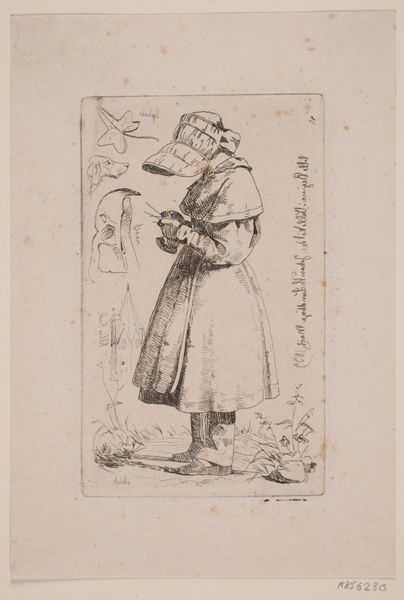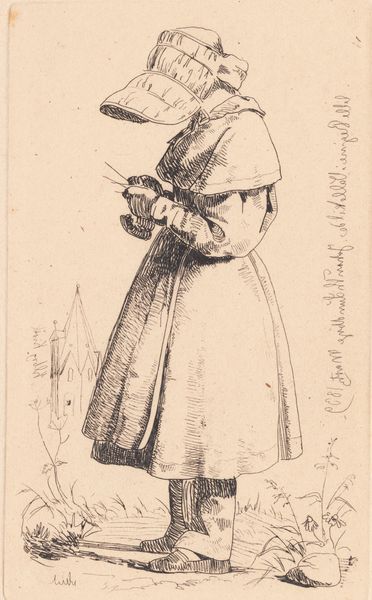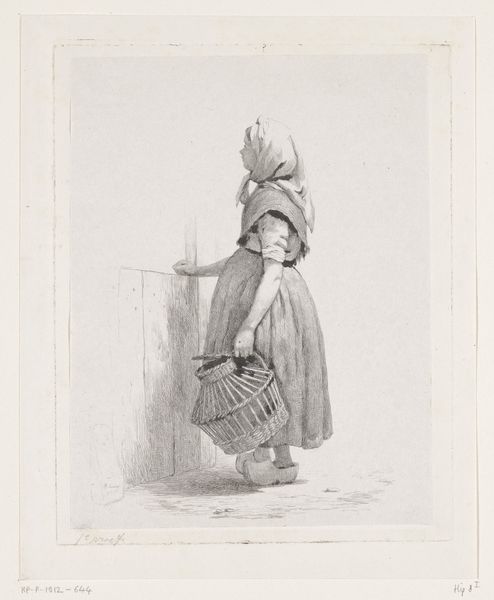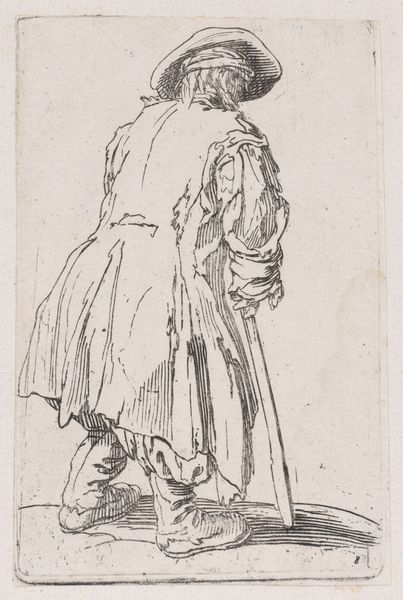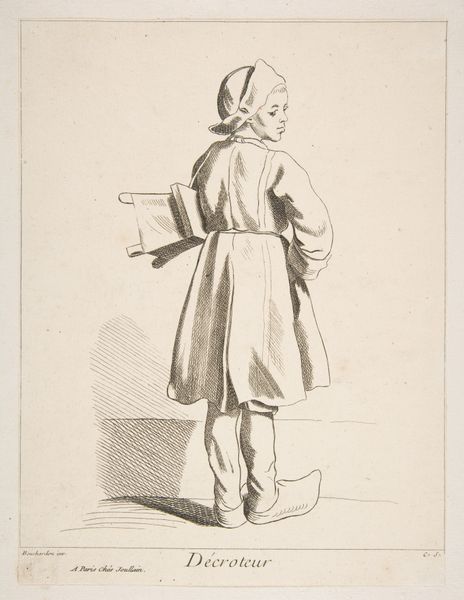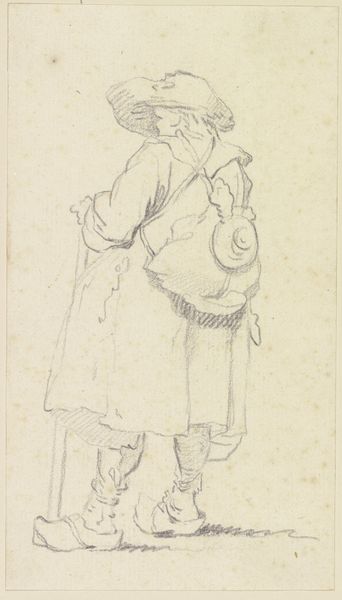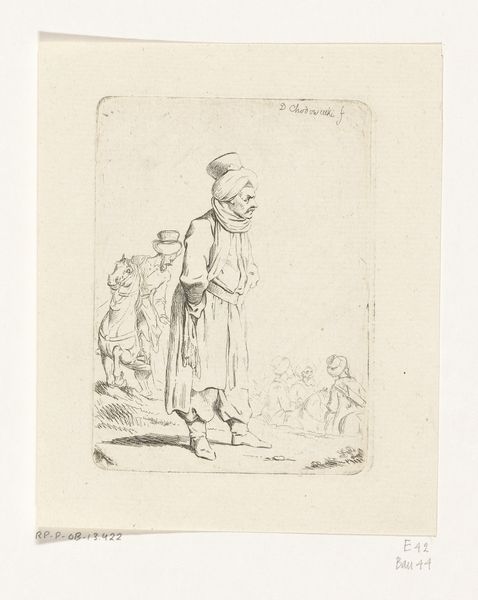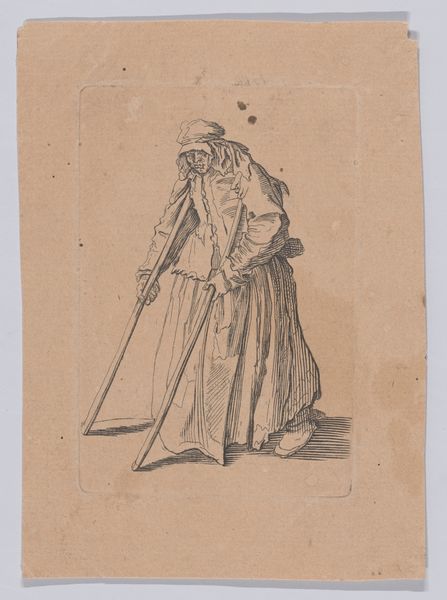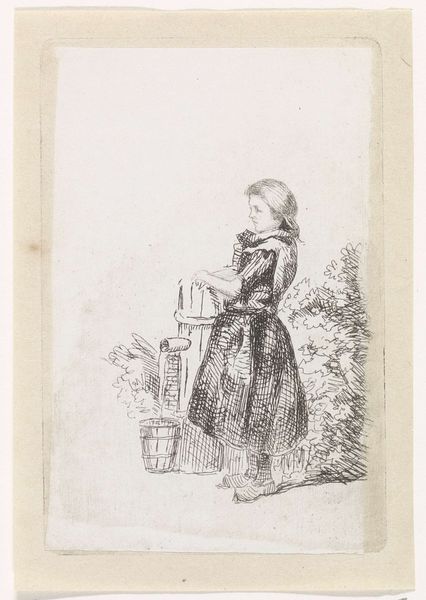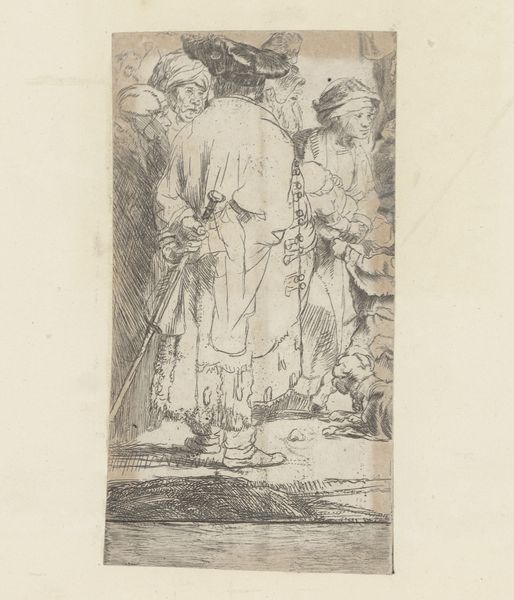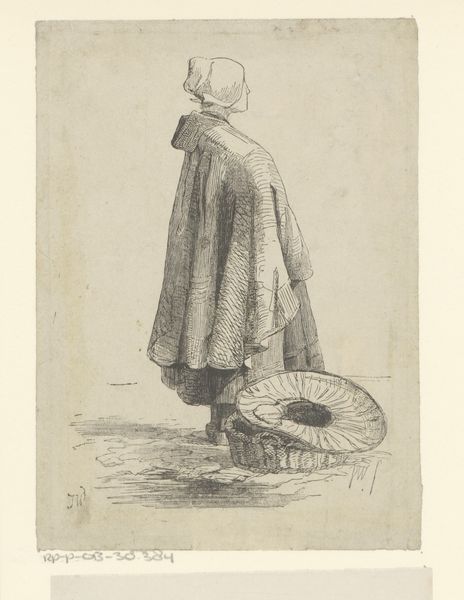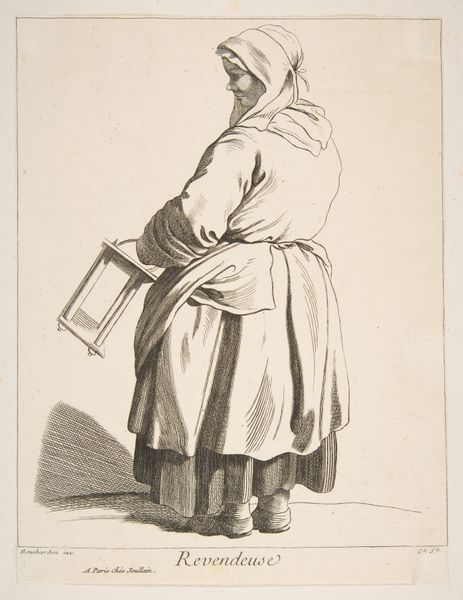
drawing, print, etching, paper, ink
#
portrait
#
drawing
# print
#
etching
#
figuration
#
paper
#
ink
Dimensions: 121 mm (height) x 73 mm (width) (plademaal)
Editor: This is Johan Thomas Lundbye's "Little Regine in Vallekilde" from 1839. It's an etching on paper, a small portrait of a young girl. What strikes me is the stark simplicity of the line work against the complexity of the multiple images layered within a single composition; it looks so fleeting and sketched. What do you see in this piece? Curator: The strength of this work lies precisely in its visual relationships. Lundbye masterfully uses the etching technique to explore line, form, and tonal variation. Notice how the crisp, precise lines defining Regine's figure contrast with the looser, more gestural lines of the surrounding sketches, seemingly unrelated; however, they bring out the concept of time captured on a single surface. Consider how the artist establishes a visual hierarchy and how you, as a viewer, navigate it. What is the function of the sketches: are they part of a coherent narrative, or are they purely formal and compositional in their significance? Editor: That's interesting! The sketches almost act as a stream-of-consciousness alongside the portrait. They definitely impact how my eyes move around the artwork, creating a dialogue between precision and spontaneity, reality and fantasy. Would you say Lundbye plays with binary oppositions here? Curator: Indeed, it would be useful to apply the theories of semiotics and structuralism here. We see an artwork as a complex sign that interacts on two axes: the synchronic and the diachronic. The synchronic is a view of the composition as a structure—binary oppositions; the diachronic considers all historical influences as codes or references. Lundbye expertly contrasts tight hatching with open spaces to define forms, yet it also gives it an atmospheric sensibility to a particular character. By examining the composition closely and considering those visual elements, one gains a deeper insight into how its elements coalesce to create its overall effect. Editor: I hadn't thought about it that way. Thanks for the structural perspective. I now perceive the artwork as a record of thought rather than solely a portrait. Curator: Precisely. It shows us how a purely formalist approach can change our entire perception and appreciation of the work.
Comments
No comments
Be the first to comment and join the conversation on the ultimate creative platform.
